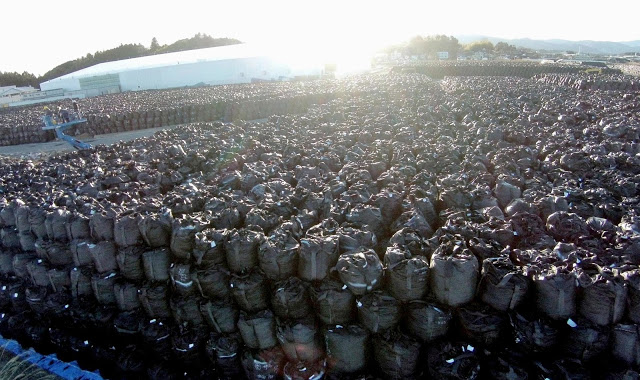TEPCO's BIG HOPE the 'ice wall' fails to freeze Fukushima's toxic water buildup! Another million tons of toxic waste to be dumped into the Pacific

Last summer 50,000 trillion Becquerel’s of radiation leaked into the Pacific, however, Tepco says tritium poses little risk to human health and is quickly diluted by the ocean.
300 tons of radioactive water is leaking daily into the Pacific and there is no known technology to fix it.
In one of the world's worst nuclear disasters, the Nos. 1 to 3 units experienced fuel meltdowns while the No. 1, No. 3 and No. 4 units were also severely damaged by hydrogen explosions following a massive earthquake and tsunami in March 2011.
To prevent leakage of tainted water, Tokyo Electric Power Co (TEPCO) has installed a costly “ice wall” to keep groundwater from seeping into the stricken Fukushima Dai-ichi nuclear plant, however, data from the operator shows, it has failed.
When the ice wall was announced in 2013, Tepco (9501.T) assured sceptics that it would limit the flow of groundwater into the plant’s basements, where it mixes with highly radioactive debris from the site’s reactors, to “nearly nothing.”
However, since the ice wall became fully operational at the end of August, an average of 141 metric tonnes a day of water has seeped into the reactor and turbine areas, more than the average of 132 metric tonnes a day during the prior nine months, a Reuters analysis of the Tepco data showed.
The aim was to freeze the soil into a solid mass that blocks groundwater flowing from the hills west of the plant to the coast.
However, the continuing seepage has created vast amounts of toxic water that Tepco must pump out, decontaminate and store in tanks at Fukushima that now number 1,000, holding 1 million tonnes, which will at some time be dumped into the Pacific.
Last July TEPCO released around 770,000 tons of highly radioactive water into the Pacific Ocean.
A study by the University of Hawaiʻi at Mānoa have revealed almost 50% of fish consumed on the islands of Hawai’i were contaminated with caesium 134 the radioactive finger-print of Fukushima.
The report also showed that migrating organisms can transport the Fukushima-signature (caesium 134) over significant distances as they showed detectable 134Cs (6.3±1.5 Bq/kg) in Pacific bluefin tuna caught off the California coast only a year after the incident.
Another study found caesium 134 in longfin tuna (Albacore) along the western coast of the US just one year after the Fukushima disaster.
It's another blow for the stricken nuclear plant with TEPCO claiming the clean-up of the site will take 40 years but with no known technology to tackle the problem 40 years is probably a very conservative guess.
Reuters Report
Radiocesium Inventories of Selected North Pacific Fish (PDF Download Available). Here
Thanks to: http://www.thebigwobble.org






 Sat Mar 23, 2024 11:33 pm by globalturbo
Sat Mar 23, 2024 11:33 pm by globalturbo

